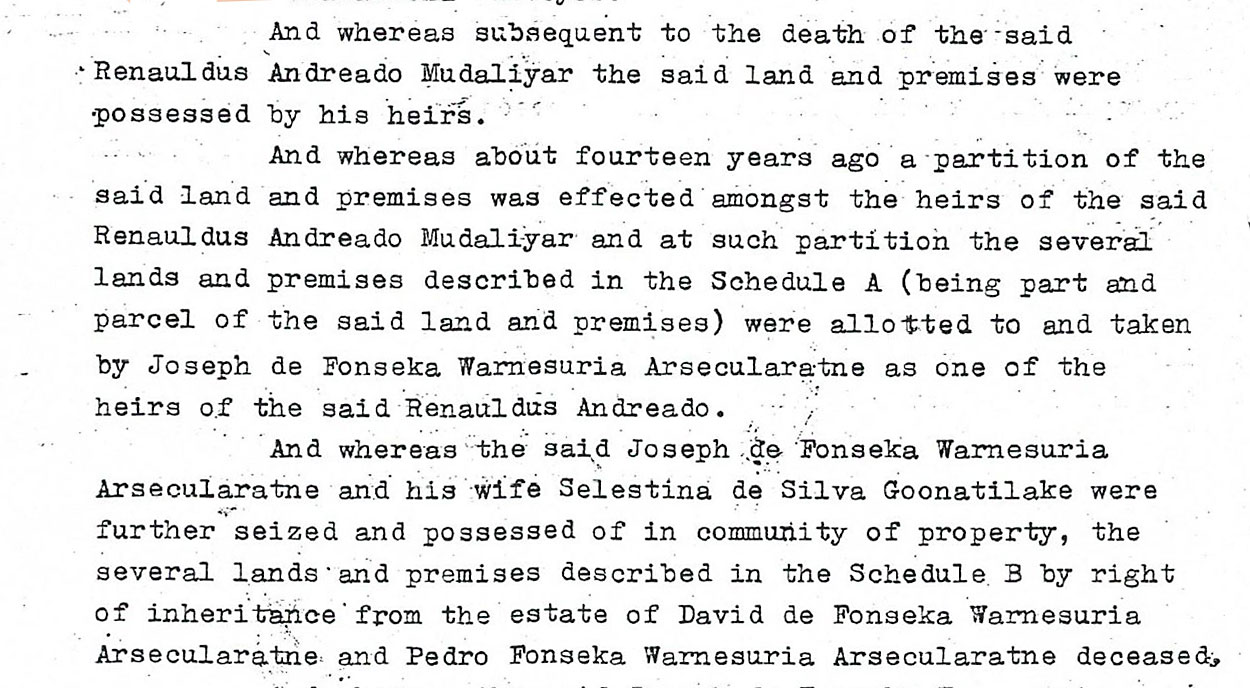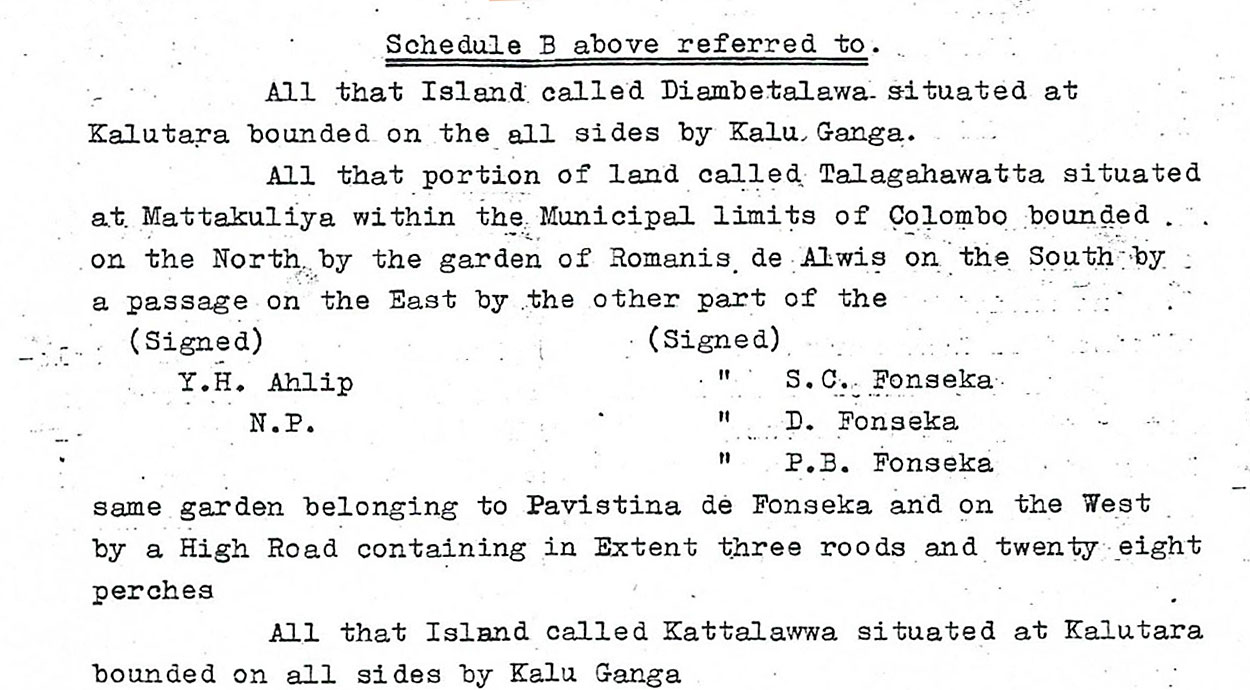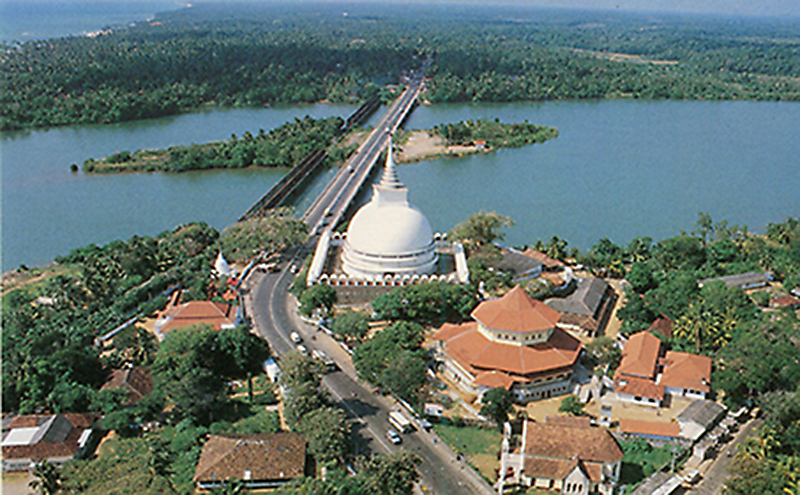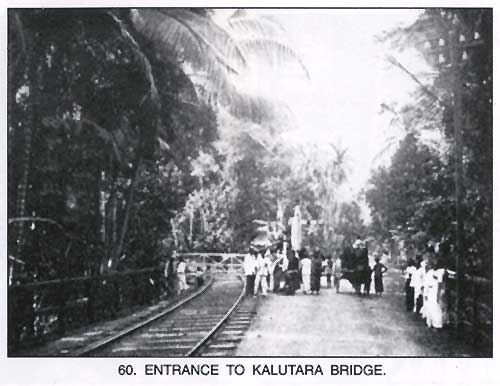
If you travel to the south of the island on the Galle Road, you will travel across the Kalutara Bridge and past the picturesque Kalutara Temple. If you did notice, the bridge is built in two sections, using the island in the middle of the river to shorten the span. This story is about this little Island.
Known as ‘Diyambetalawatte’ or ‘Gangawatte’, the Island was granted to Pedro de Fonseka by the Dutch Government. Decades later, the British administration acquired part of this land to build a bridge and his son Bastian de Fonseka was compensated for the loss incurred, through a release by the government dated 20th June 1811. Documents relating to this were in the possession of Mr. S. R. de Fonseka, and is listed in the D’andrado Manuscripts and was authenticated by the government archivist. ( C.Q.P. No. 11339 of 1.7.1901 ).
Dr. Srilal Fernando (now domiciled in Australia), recounts the family’s connections to this Island.
It belonged to an ancestor of mine Bastian de Andrado, and along with the Mahawatte property came down to Joseph de Fonseka, my grandfather’s grandfather. By descent it came to my mother (Silvin Gladys de Fonseka) along with Mahawatte properties. We lived at 144 Mahawatte Road and I built a house on 144 A Mahawatte Rd.
Diyambetalawa Island in Kalutara was acquired by the Government and a small parcel was left, which was leased to a firewood dealer. Again with the passage of time we did not bother to look after it. As all my mother’s properties came to me, I am the legal owner of these 2 properties.
My mother’s Almirah which we have at home and came down from her aunt (Grandfather’s sister) Cecilia Elizabeth de Fonseka. It was made of Nadun trees cut down from this island. Her initials CEF are carved on the cartouche at the top of the Almirah.



The British engineers designed a steel bridge over the ‘Kalu Ganga’ in two sections, using this island in the middle of the river to shorten the span. Each bridge consisted of 6 spans of lattice girders where a single girder was 100 feet long. It was opened for road traffic in August 1877 along with a single line of rails in the middle. It was 450ft in length overall. This earliest bridge carried both the road and rail traffic. With heavier and more modern engines and rolling stock coming into use, they also built a bridge parallel to the old bridge and it was given entirely to the road traffic. This new bridge was completed around 1910. The above photograph depicts the original bridge when built. The road bridge had distinctive arched girders placed on top of the bridge.

Lorna de Silva (daughter of S. R. De Fonseka Jnr) reminiscing about the bridge narrated this story in May, 2002.
“When the Kalutara Bridge was opened by the British, they held a grand ball on top of the bridge, closer to the Government Agent’s residence, where the temple is now. De Fonseka families attended the ceremony. Aunty Raina, daughter of Aunty Emmie (Emmelina de Fonseka), had the gown she wore for the ball till recent times.
(Emmelina was the sister of Edmund Clark de Fonseka and Henry Fredrick de Fonseka)”
Before the bridge was built, a ferry was in operation, a little further up river. The road to the ferry is still known as the ‘Old Ferry Road’, and many of the de Fonseka properties faced this road. The access road to the new bridge cut across lands belonging to James Fretz de Fonseka (James Place) and Henry de Fonseka (Telford Lodge), effectively dividing these properties into two.
The modern four lane bridge that spans the river now is a fairly recent addition, built close to one hundred years later around 1997. Presently the remaining portion of the land to the east of the bridge is used as a vehicle park, for the large number of visitors that throng the Kalutara Temple.
 |
 |


